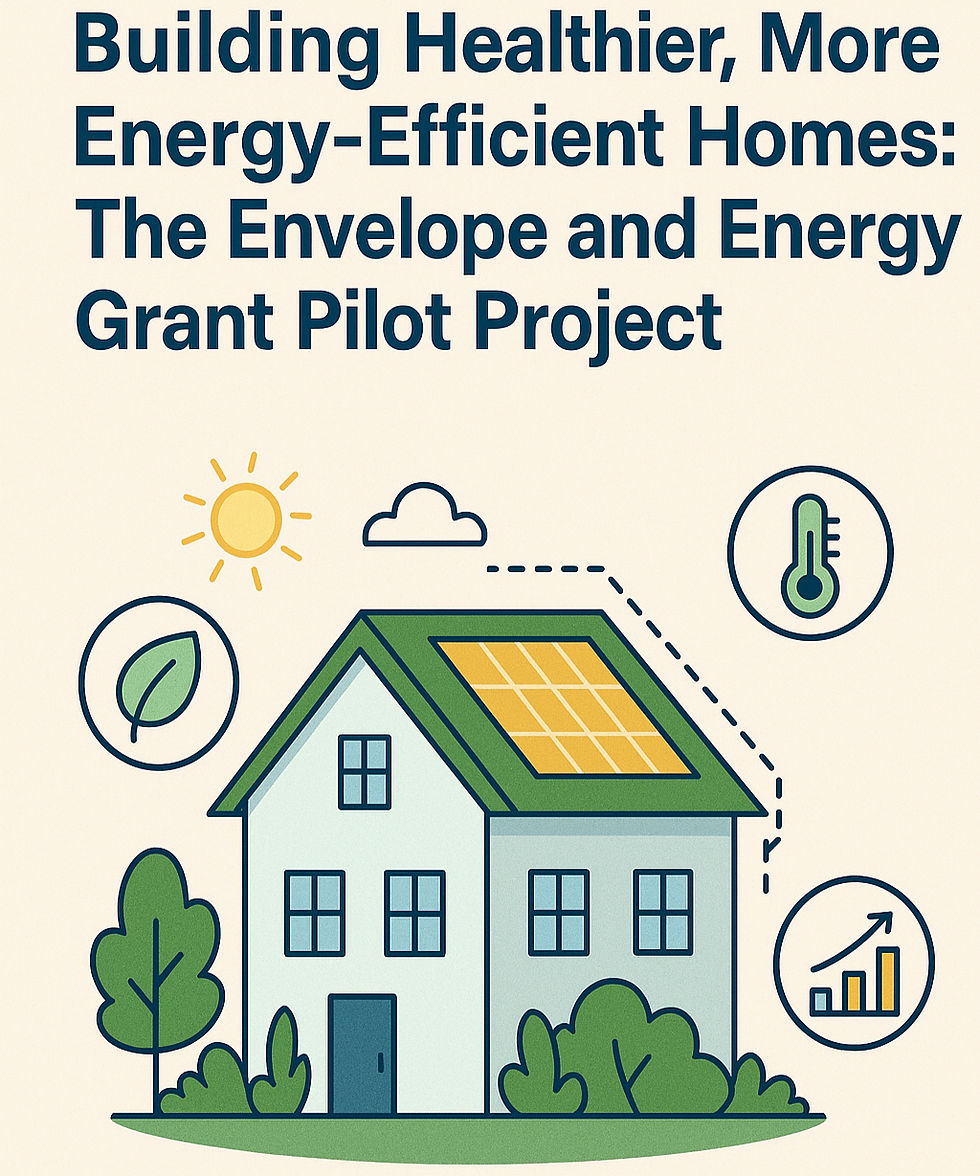7 Big Ways to Reduce Energy Usage at Home
- localenergy
- Jul 15
- 4 min read

Transform Your Home Into an Energy-Efficient Powerhouse
As energy costs climb and climate concerns intensify, homeowners are looking for serious, long-term solutions to cut back on energy use. In a previous blog post, we brought you 7 Small Ways to Reduce Energy Usage. While small changes like switching to LED bulbs help, true savings come from larger, structural upgrades and lifestyle shifts. While these changes will have a higher upfront cost, the lifetime savings should be enough to offset the expense and save money in the long run.
If you're ready to make a meaningful dent in your energy bills, and your carbon footprint, here are 7 Big Ways to reduce energy usage at home.
1. Install a Solar Energy System
Installing a solar array is one of the most effective long-term investments for reducing household energy usage. Modern solar panels can power everything from lights and appliances to water heaters and EV chargers.
Benefit: Once installed, solar panels can reduce or even eliminate your electricity bill.
Bonus: If you can complete a solar installation in 2025 you can still receive the Clean Energy tax rebates, but hurry! These rebates will go away in 2026.
Pro Tip: Pair with battery storage to use solar power even when the sun isn’t shining and keep your system active even during the winter.
2. Upgrade to Energy-Efficient Appliances
Old appliances can be energy vampires, consuming more electricity than necessary. Newer models, especially those with Energy Star® certification, are designed to do the same work with far less power, thus using a fraction of the energy required to run older appliances.
What to Upgrade: Refrigerators, washing machines, dishwashers, dryers, and water heaters.
Long-Term Payoff: Though energy-efficient appliances may cost more upfront, they often pay for themselves over time through lower utility bills.
3. Replace or Upgrade Heat Pumps
Did you know that heating and cooling typically account for 40-50% of a home’s energy use. Upgrading to a modern, high-efficiency heat pump, whether air-source or ground-source, can drastically reduce that load.
Why It Works: Heat pumps transfer heat instead of generating it, which uses significantly less energy than traditional HVAC systems.
Consider This: The current rebates for upgrading your home's heat pump will be going away in 2026! Act now to receive the 2025 tax rebate. The heat pump must be fully installed and operational to take advantage of the rebate.
4. Improve Windows and Doors
Drafty windows and poorly sealed doors can leak air, forcing your heating and cooling systems to work overtime. Upgrading to double- or even triple-pane windows and installing weatherproof, weatherproof doors can help seal your home tight.
Added Benefit: New windows often improve home comfort and reduce street noise.
Quick Fixes: If full replacement isn’t an option, add weatherstripping and thermal curtains to help make your existing doors and windows more efficient.
5. Reinsulate and Seal Your Home
Since you don't see it, most don't think often about their home's insulation, but it’s one of the most effective ways to reduce energy usage. Upgrading attic, wall, and crawlspace insulation helps maintain consistent indoor temperatures year-round.
Important Areas: Walls and rooms attached to non-temperature controlled areas, like attached garages and attics. Crawlspaces and areas under stairs are often under-insulated.
Things to Consider: Have your home inspected using a heat sensor gun to located the areas where your home may be lacking insulation or overly drafty. Be careful not over-insulate, which can cause moisture build up and mold growth. When in doubt, hire a professional.
6. Install a Smart Home Energy System
Smart thermostats, energy monitors, water monitors, and automated systems give you real-time control over your home and energy usage - even when you're not home. These tools help optimize when and how your home uses power.
Example: A smart thermostat learns your routines and adjusts heating/cooling accordingly. Most can be controlled remotely via an app, putting control back in your hands should you have an unexpected absense for your home.
Energy Monitoring: Whole-home energy monitors show you which appliances are drawing the most power and when. This can help you make small lifestyle changes that will make your home more energy-efficient.
7. Rethink Your Lifestyle and Habits
Big tech upgrades are great, but they’re even more effective when paired with mindful living. Changing your energy habits can lead to surprising savings.
Laundry: Wash clothes in cold water and hang dry when possible.
Lighting: Turn off lights when leaving rooms and rely on natural light during the day. Use smalled lamps instead of multi-bulb overhead lights when you only need a little light.
Cooking: Use smaller appliances like toaster ovens or air fryers instead of a full-sized oven for small meals.
Track Energy Usage: Using an energy monitoring system is a great way to give you insight into your personal habbits you didn't even know you had! The best way to make changes in habbits is to learn what those habits are.
Set Goals and Reward: Give yourself monthly energry challenges to see if you can find meaningful ways to reduce your energy useage. Reward yourself with a percentage of your energy savings with a dinner out, a relaxing spa day, or a splurge purchase you've been wanting to make.
Final Thoughts
Reducing your home’s energy usage isn’t just good for your wallet, it’s good for the planet. Whether you start by upgrading your heat pump or going all-in with a solar array, every big change brings you closer to a cleaner, more efficient, and more sustainable home. The best part? These improvements often increase your home's value while decreasing your dependence on fossil fuels. You may even find yourself embracing a simpler lifestyle that uses less energy.
Ready to make a change? Start with an energy audit to identify where your home is losing power and where you can save the most. Then take action, one upgrade at a time.






Comments